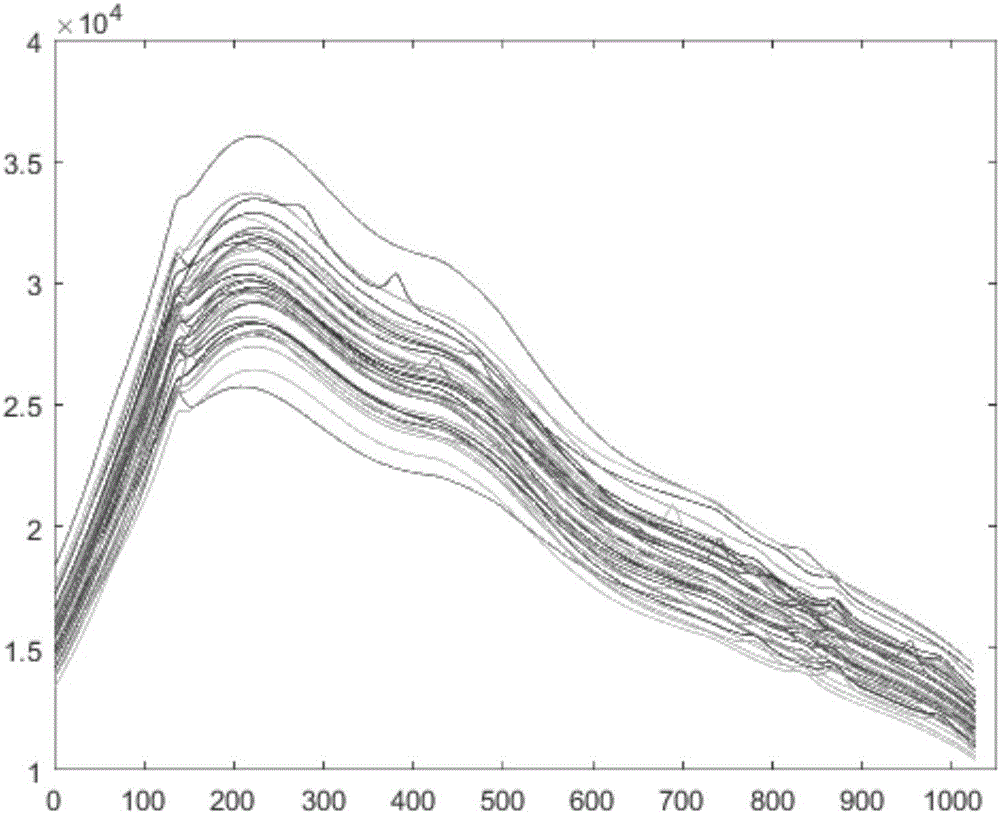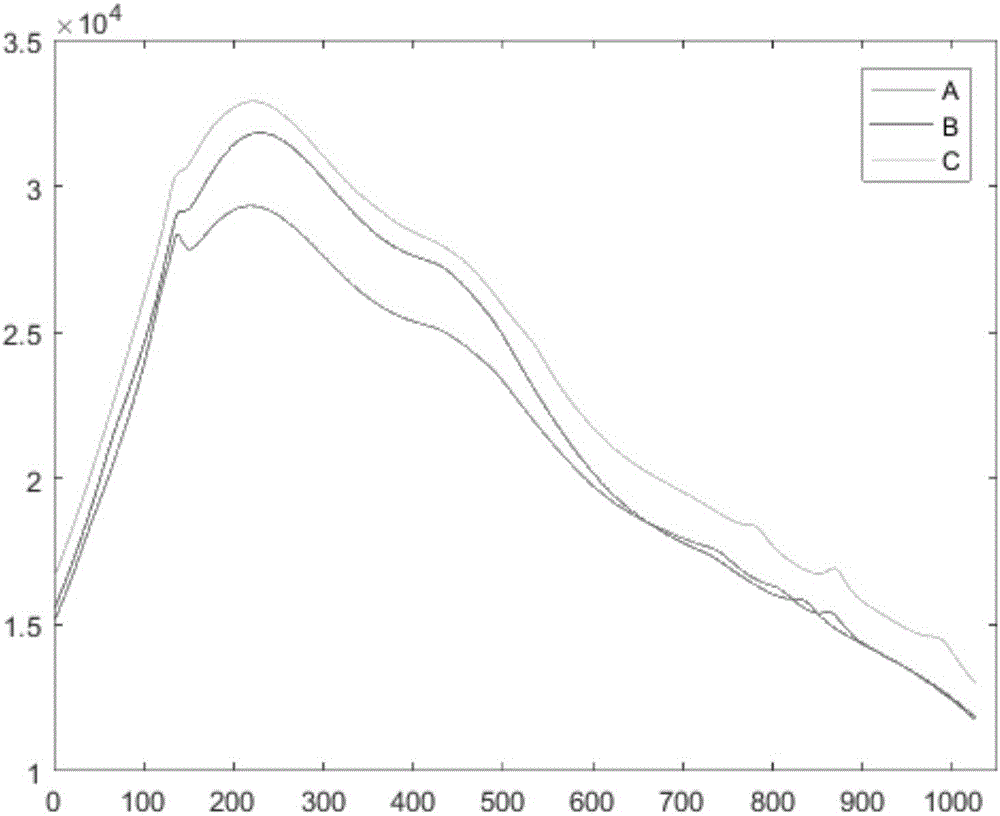Method for performing clustering analysis and identification on substances by adopting Raman spectrums
A Raman spectroscopy and cluster analysis technology, applied in Raman scattering, material excitation analysis, character and pattern recognition, etc., can solve the problems of low signal-to-noise ratio, difficult identification, affecting the practicability of the instrument, etc., to achieve the application scope Wide range, wide application range, simple method effect
- Summary
- Abstract
- Description
- Claims
- Application Information
AI Technical Summary
Problems solved by technology
Method used
Image
Examples
Embodiment 1
[0060] A method that uses Raman spectroscopy to perform cluster analysis and identification of substances. This method is to select three types of pharmaceutical tablets A, B, and C that use the same excipients but have different APIs to perform Raman spectrum identification. It includes the following steps:
[0061] ① Collect the Raman spectra of the samples by the Raman spectrometer. The sample set consists of three types of samples of A, B, and C with the number of samples of 15, 10, and 10, and 5 independent samples, totaling 40. sample.
[0062] figure 1 It is the score map of the first and second principal components obtained by principal component analysis (PCA) for 40 samples. In the figure, various samples and isolated samples overlap, and the partition cannot be determined.
[0063] The spectra of all samples are as figure 2 , The sample’s excipients have a strong fluorescence effect, which is figure 2 Intuitively, the spectral lines are similar, making direct identifica...
PUM
 Login to View More
Login to View More Abstract
Description
Claims
Application Information
 Login to View More
Login to View More - R&D
- Intellectual Property
- Life Sciences
- Materials
- Tech Scout
- Unparalleled Data Quality
- Higher Quality Content
- 60% Fewer Hallucinations
Browse by: Latest US Patents, China's latest patents, Technical Efficacy Thesaurus, Application Domain, Technology Topic, Popular Technical Reports.
© 2025 PatSnap. All rights reserved.Legal|Privacy policy|Modern Slavery Act Transparency Statement|Sitemap|About US| Contact US: help@patsnap.com



